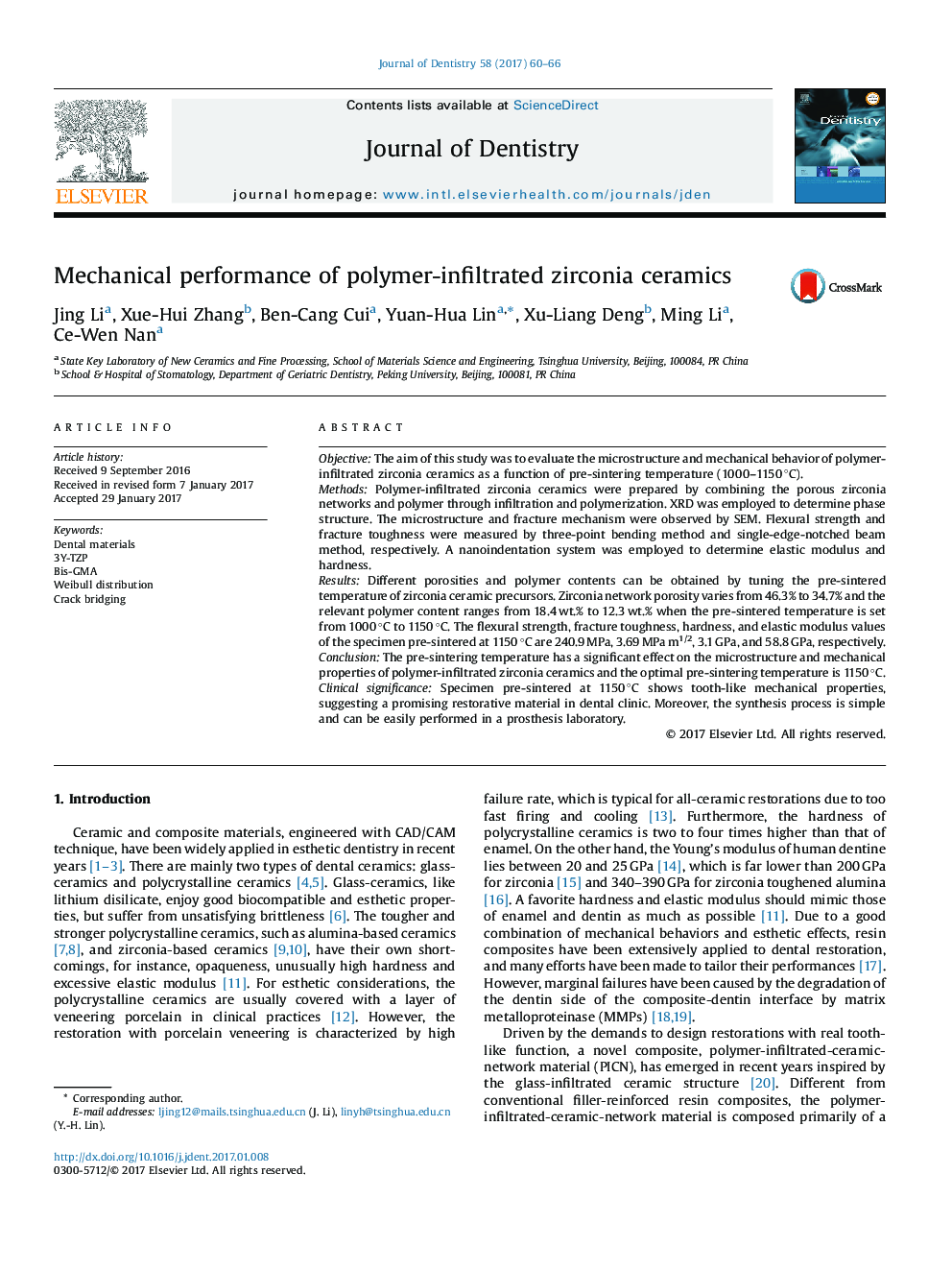| کد مقاله | کد نشریه | سال انتشار | مقاله انگلیسی | نسخه تمام متن |
|---|---|---|---|---|
| 5640695 | 1585471 | 2017 | 7 صفحه PDF | دانلود رایگان |
ObjectiveThe aim of this study was to evaluate the microstructure and mechanical behavior of polymer-infiltrated zirconia ceramics as a function of pre-sintering temperature (1000-1150 °C).MethodsPolymer-infiltrated zirconia ceramics were prepared by combining the porous zirconia networks and polymer through infiltration and polymerization. XRD was employed to determine phase structure. The microstructure and fracture mechanism were observed by SEM. Flexural strength and fracture toughness were measured by three-point bending method and single-edge-notched beam method, respectively. A nanoindentation system was employed to determine elastic modulus and hardness.ResultsDifferent porosities and polymer contents can be obtained by tuning the pre-sintered temperature of zirconia ceramic precursors. Zirconia network porosity varies from 46.3% to 34.7% and the relevant polymer content ranges from 18.4 wt.% to 12.3 wt.% when the pre-sintered temperature is set from 1000 °C to 1150 °C. The flexural strength, fracture toughness, hardness, and elastic modulus values of the specimen pre-sintered at 1150 °C are 240.9 MPa, 3.69 MPa m1/2, 3.1 GPa, and 58.8 GPa, respectively.ConclusionThe pre-sintering temperature has a significant effect on the microstructure and mechanical properties of polymer-infiltrated zirconia ceramics and the optimal pre-sintering temperature is 1150 °C.Clinical significanceSpecimen pre-sintered at 1150 °C shows tooth-like mechanical properties, suggesting a promising restorative material in dental clinic. Moreover, the synthesis process is simple and can be easily performed in a prosthesis laboratory.
Journal: Journal of Dentistry - Volume 58, March 2017, Pages 60-66
